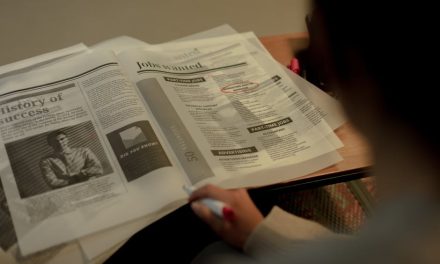Table of Contents
“Unlocking the Power of Productive Meetings”
Introduction
Mastering the Art of Leading Productive Meetings is a crucial skill for any leader or professional. Effective meetings are essential for driving collaboration, decision-making, and achieving organizational goals. This guide will provide valuable insights and practical strategies to help individuals enhance their meeting leadership skills, create a productive meeting environment, and ensure that meetings are focused, efficient, and result-oriented. By mastering the art of leading productive meetings, individuals can maximize their team’s time and productivity, foster engagement and participation, and ultimately drive success in their organizations.
Effective Strategies for Facilitating Engaging Meetings

Mastering the Art of Leading Productive Meetings
Effective Strategies for Facilitating Engaging Meetings
In today’s fast-paced business world, meetings have become an essential part of our professional lives. However, all too often, meetings can be unproductive and time-consuming, leaving participants feeling frustrated and unengaged. As a leader, it is crucial to master the art of leading productive meetings to ensure that valuable time is not wasted and that everyone involved feels motivated and inspired.
One of the most effective strategies for facilitating engaging meetings is to set clear objectives and create an agenda. Before the meeting, take the time to define the purpose of the meeting and what you hope to achieve. This will help you stay focused and ensure that the meeting stays on track. Creating an agenda and sharing it with participants in advance will also allow them to come prepared and contribute meaningfully to the discussion.
Another important aspect of leading productive meetings is to encourage active participation from all attendees. It is essential to create an inclusive environment where everyone feels comfortable sharing their ideas and opinions. One way to achieve this is by using icebreaker activities or warm-up exercises at the beginning of the meeting. This will help break the ice and set a positive tone for the rest of the discussion.
During the meeting, it is crucial to manage time effectively. Start and end the meeting on time, and allocate specific time slots for each agenda item. This will prevent the meeting from running over and ensure that all topics are adequately addressed. If a discussion starts to go off track or becomes too lengthy, gently steer the conversation back to the main point and suggest scheduling a separate meeting to address the tangential topic.
To keep participants engaged throughout the meeting, it is essential to vary the format and activities. Consider incorporating interactive elements such as group discussions, brainstorming sessions, or small group activities. This will not only keep participants actively involved but also foster collaboration and creativity. Additionally, using visual aids such as slides or charts can help convey information more effectively and keep participants visually engaged.
As a leader, it is crucial to lead by example and demonstrate active listening skills during the meeting. Show genuine interest in what others have to say and provide constructive feedback when necessary. Avoid interrupting or dominating the conversation, and encourage others to do the same. This will create a respectful and inclusive atmosphere where everyone’s contributions are valued.
Finally, it is essential to end the meeting on a positive note and summarize the key takeaways and action items. This will ensure that everyone is clear on what needs to be done moving forward and prevent any misunderstandings. Follow up with meeting minutes or a summary email to document the decisions made and the next steps. This will help hold everyone accountable and provide a reference point for future discussions.
In conclusion, mastering the art of leading productive meetings is crucial for any leader. By setting clear objectives, encouraging active participation, managing time effectively, varying the format, demonstrating active listening skills, and ending on a positive note, leaders can create engaging and meaningful meetings. Remember, a well-run meeting can be a powerful tool for driving productivity and fostering collaboration within a team.
Key Techniques for Setting Clear Meeting Objectives
Mastering the Art of Leading Productive Meetings
Meetings are an essential part of any organization’s workflow, but all too often they can become unproductive and time-consuming. As a leader, it is crucial to master the art of leading productive meetings to ensure that valuable time is not wasted and objectives are met efficiently. One key technique for achieving this is setting clear meeting objectives.
Setting clear meeting objectives is the foundation for a successful and productive gathering. Without clear objectives, meetings can easily veer off track, leading to confusion and a lack of focus. By clearly defining the purpose of the meeting, leaders can ensure that everyone is on the same page and working towards a common goal.
To set clear meeting objectives, it is important to start by identifying the desired outcome. What is the purpose of the meeting? Is it to brainstorm ideas, make decisions, or provide updates? By clearly defining the desired outcome, leaders can set the tone for the meeting and guide the discussion in the right direction.
Once the desired outcome is established, it is essential to communicate it to the participants. This can be done through a meeting agenda or a brief introduction at the beginning of the meeting. By clearly stating the objective, leaders can ensure that everyone understands what needs to be accomplished and can contribute effectively.
In addition to communicating the objective, it is also important to outline the specific goals that need to be achieved during the meeting. These goals should be specific, measurable, achievable, relevant, and time-bound (SMART). By setting SMART goals, leaders can provide a clear roadmap for the meeting and keep participants focused on the task at hand.
During the meeting, it is crucial to continuously refer back to the objectives and goals. This can be done by periodically summarizing the progress made and reminding participants of what still needs to be accomplished. By keeping the objectives at the forefront of everyone’s minds, leaders can ensure that the discussion remains focused and productive.
Another key technique for setting clear meeting objectives is to involve participants in the process. By soliciting input and feedback from the attendees, leaders can ensure that the objectives are relevant and meaningful to everyone involved. This not only increases engagement but also fosters a sense of ownership and accountability among the participants.
Furthermore, it is important to be flexible and adaptable when setting meeting objectives. Sometimes, unexpected issues or opportunities may arise during the discussion, and it is essential to be open to adjusting the objectives accordingly. By being flexible, leaders can ensure that the meeting remains productive and that valuable insights and ideas are not overlooked.
In conclusion, setting clear meeting objectives is a key technique for leading productive meetings. By clearly defining the purpose and desired outcome, communicating them to the participants, setting SMART goals, continuously referring back to the objectives, involving participants in the process, and being flexible, leaders can ensure that meetings are focused, efficient, and achieve the desired results. Mastering the art of leading productive meetings is a skill that every leader should strive to develop, as it can greatly enhance the effectiveness and efficiency of an organization’s workflow.
Tips for Managing Time and Keeping Meetings on Track
Meetings are an essential part of any organization’s workflow, but they can often become time-consuming and unproductive if not managed effectively. As a leader, it is crucial to master the art of leading productive meetings to ensure that valuable time is not wasted and that the objectives of the meeting are achieved. In this section, we will discuss some tips for managing time and keeping meetings on track.
One of the most important aspects of managing time in a meeting is setting a clear agenda. Before the meeting, it is essential to determine the purpose of the meeting and what needs to be accomplished. This will help you create a structured agenda that outlines the topics to be discussed and the time allocated to each item. By sharing the agenda with the participants beforehand, everyone will be aware of what to expect and can come prepared, ensuring that the meeting stays on track.
Another effective way to manage time in a meeting is to assign time limits to each agenda item. This helps prevent discussions from dragging on and ensures that all topics are covered within the allocated time frame. As the leader, it is your responsibility to enforce these time limits and gently guide the conversation back on track if it starts to veer off-topic. Using phrases like “Let’s stay focused on the agenda” or “We have limited time, so let’s move on” can help redirect the discussion without causing offense.
In addition to setting time limits, it is crucial to encourage active participation from all attendees. This can be achieved by creating an inclusive environment where everyone feels comfortable sharing their thoughts and ideas. By actively engaging participants and encouraging them to contribute, you can prevent one or two individuals from dominating the conversation and ensure that all perspectives are heard. Transitional phrases such as “What are your thoughts on this?” or “Does anyone have anything to add?” can help facilitate participation and keep the meeting dynamic.
To further manage time effectively, it is essential to minimize distractions during the meeting. This means encouraging attendees to silence their phones and laptops and avoid multitasking. By setting this expectation from the beginning, you can create an environment that fosters active listening and engagement. Additionally, it is crucial to stay on track and avoid going off on tangents or engaging in unrelated discussions. Politely redirecting the conversation back to the agenda can help maintain focus and prevent time wastage.
Lastly, it is important to end the meeting on time. This shows respect for everyone’s time and ensures that participants can transition smoothly to their next tasks. As the leader, it is your responsibility to manage the time effectively and wrap up the meeting within the allocated time frame. Summarizing the key points discussed, assigning action items, and scheduling follow-up meetings if necessary can help bring the meeting to a productive close.
In conclusion, mastering the art of leading productive meetings requires effective time management and keeping the meeting on track. Setting a clear agenda, assigning time limits, encouraging active participation, minimizing distractions, and ending the meeting on time are all essential strategies for achieving this goal. By implementing these tips, leaders can ensure that meetings are productive, efficient, and contribute to the overall success of the organization.
Enhancing Collaboration and Decision-Making in Meetings
Meetings are an essential part of any organization’s workflow. They provide a platform for collaboration, decision-making, and information sharing. However, all too often, meetings can become unproductive and time-consuming, leaving participants feeling frustrated and unengaged. To ensure that meetings are effective and efficient, it is crucial for leaders to master the art of leading productive meetings.
One key aspect of enhancing collaboration and decision-making in meetings is creating a positive and inclusive environment. When participants feel comfortable and valued, they are more likely to actively contribute to the discussion. Leaders can achieve this by setting ground rules for respectful communication and encouraging everyone to share their ideas and perspectives. Additionally, leaders should be mindful of their own behavior, actively listening to others and avoiding dominating the conversation.
Another important factor in productive meetings is having a clear agenda. A well-defined agenda helps keep the discussion focused and ensures that all necessary topics are covered. Leaders should distribute the agenda in advance, allowing participants to come prepared and contribute meaningfully to the meeting. During the meeting, the leader should guide the discussion, ensuring that each agenda item is addressed and that the conversation stays on track.
To enhance collaboration and decision-making, leaders should also encourage active participation from all attendees. This can be achieved by using various techniques such as brainstorming, group discussions, and breakout sessions. By involving everyone in the decision-making process, leaders can tap into the collective knowledge and expertise of the team, leading to more informed and effective decisions.
Furthermore, leaders should foster a culture of open and constructive feedback in meetings. Encouraging participants to provide feedback on ideas and proposals can lead to valuable insights and improvements. Leaders should create a safe space where feedback is welcomed and appreciated, ensuring that it is given respectfully and constructively. By incorporating feedback into the decision-making process, leaders can make more informed choices and gain the support and commitment of the team.
In addition to creating a collaborative environment, leaders should also be mindful of time management in meetings. Time is a valuable resource, and wasting it in unproductive discussions can hinder progress. Leaders should set clear time limits for each agenda item and ensure that the meeting stays on schedule. They should also be prepared to make decisions when necessary, avoiding unnecessary delays and ensuring that the meeting achieves its objectives.
Lastly, leaders should follow up on the outcomes and actions discussed in the meeting. This includes documenting decisions, assigning responsibilities, and setting deadlines. By holding participants accountable for their commitments, leaders can ensure that the decisions made in the meeting are implemented effectively. Following up also demonstrates the leader’s commitment to the meeting’s outcomes and reinforces the importance of productive discussions.
In conclusion, enhancing collaboration and decision-making in meetings requires leaders to create a positive and inclusive environment, have a clear agenda, encourage active participation, foster a culture of feedback, manage time effectively, and follow up on outcomes. By mastering these skills, leaders can transform meetings from unproductive time-wasters to valuable opportunities for collaboration and decision-making. Ultimately, this will lead to increased productivity, engagement, and success for the organization as a whole.
Q&A
1. What is the book “Mastering the Art of Leading Productive Meetings” about?
The book provides guidance and strategies for leading effective and efficient meetings.
2. Who is the author of “Mastering the Art of Leading Productive Meetings”?
The author of the book is Michael Doyle.
3. What are some key topics covered in the book?
The book covers topics such as setting clear meeting objectives, creating an agenda, managing time effectively, facilitating productive discussions, and resolving conflicts.
4. Who would benefit from reading “Mastering the Art of Leading Productive Meetings”?
Anyone who regularly leads or participates in meetings, whether in a professional or personal setting, can benefit from reading this book.
Conclusion
Mastering the Art of Leading Productive Meetings is crucial for effective leadership and organizational success. By implementing strategies such as setting clear objectives, creating an inclusive environment, and utilizing effective communication techniques, leaders can ensure that meetings are productive and valuable for all participants. Additionally, incorporating technology and tools to streamline processes and enhance collaboration can further optimize meeting outcomes. Ultimately, mastering the art of leading productive meetings can lead to improved decision-making, increased employee engagement, and enhanced overall organizational performance.




